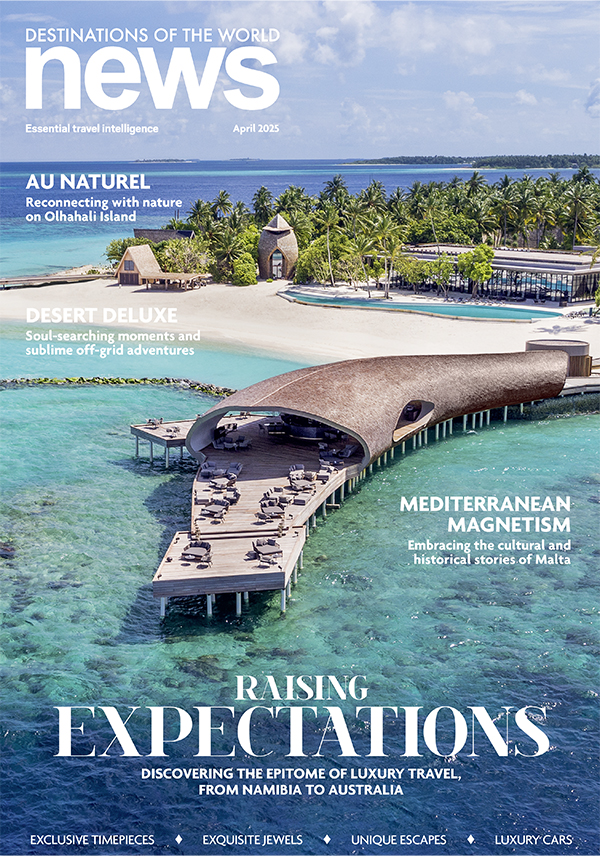When considering the cuisine of Mauritius, it’s likely that Creole fare is what will first spring to mind. You wouldn’t be incorrect pairing the two, but to leave it at that is simply scratching the surface of the island’s rich and varied gastronomy. First colonised by the Dutch in the 1600s, the following centuries saw the French, then the British take command of the island, leaving their mark – particularly the French, who ruled for a century – on the local architecture, culture and, of course, fare. But the mingling of cultures – and their food – doesn’t end there. In addition to the Europeans, other nationalities flooded Mauritius, especially after the British abolished slavery.
In the early 1800s, with newcomers hailing from Africa, China and India, the destination became a country of expats who brought their traditions, religions and flavours with them. As these flavours mixed over time, it resulted in something quite distinctly Mauritian: a mix of curries, island coconuts and hearts of palm, French flair, vanilla beans, and Asian rice and noodles. The island’s heritage has long been naturally steeped in epicurean interests, proffering a trifecta of delicious exports.

The Dutch brought sugar cane, which resulted in rum production, with many distilleries today continuing to produce the liquor with tantalising infusions such as vanilla, coffee and spices – find your favourite flavour during brief tours of any of the many distilleries, each of which end with complimentary (and sometimes surprisingly generous) tastings. A member of the Vanilla Islands, the namesake sweet spice can be found on old plantations, still being tended as the orchids wind up poles, producing flowers and pods, the latter of which are picked by hand at just the right time, then dried. The late 19th century saw the production of tea begin to take over the island.
A trio of stately old tea plantations can still be visited – some of which still produce and export the tea (as well as rum and vanilla) – as part of La Route du Thé (the tea route), doubling as museums filled with vintage photographs, old tea-leaf-harvesting and-curing equipment, and peaceful billiards rooms and terraces where you can grab a seat and try a sip of the locally made beverage yourself.

When approaching the verdant island, it looks ripe for farming, yet many
fine-dining restaurants relied on sourcing their produce from
elsewhere. But recently, this has been changing. Chefs – many of whom hail from Europe and visited or arrived on temporary assignments but fell in love with the island, eventually basing themselves there – are championing a more locavore-centric gastronomic culture, striving to work not just with local ingredients, but local chefs who share a dedication to the island’s cuisine. One of these champions is chef Fabio de Poli of La Table du Château at the elegant Château de Labourdonnais.
“Mauritian cuisine is beginning to find its base and is evolving with the local professionals who are passionate about cooking and want to show the rest of the word what Mauritius is capable of,” he says. What Mauritius is capable of today is an impressive mix of global cuisine with local infusions (just try going one meal without something being soaked in rum or topped by a vanilla pod) and modern influences, all ably crafted by chefs hailing from near and far who are united by this island’s singular palette of flavours.
The best 4 restaurants in Mauritius:
Le Barachois
Located on the fringes of Constance Le Prince Maurice’s tony grounds, Le Barachois is practically a destination in itself. To arrive, a lengthy stroll along a candlelit boardwalk above the coast’s shore eventually brings you to the restaurant’s dining room, which is actually comprised of a handful of pontoons surrounded by mangroves and a tranquil lagoon. With no music, and the atmospheric sounds of nature providing the soundtrack, the cuisine seems like it may almost be secondary – but once the dishes begin arriving, highlighting the fresh seafood of the Indian Ocean spiced with Creole touches, it’s clear that the fare is a worthy contender for the setting.


The faye faye crab served tartare-style with taro root and chilli is a menu highlight, the succulent crustacean hailing from the nearby, minuscule archipelago of Saint Brandon. But don’t get too distracted by the food, lest you miss a visit from the lagoon’s resident two-metre shark, Johnny.
Constance Le Prince Maurice
+230 402 3636
www.constancehotels.com
L'Alchimiste
Nestled into the lush, hilly hamlet of Chamarel, L’Alchimiste is a highlight on the grounds of a rum distillery – which happens to produce exceptional rums and liqueurs as well as cuisine. The distillery tour (if you choose to do it) is brief, so try to time your visit around lunch (the restaurant is not open for dinner), when you can take a seat at the chic restaurant where prettily plated gourmet Mauritian cuisine is served.


Following a philosophy that takes advantage of the island’s natural bounty, sophisticated dishes on the menu feature ingredients sourced directly from the rhumerie’s estate. Start with a rum punch muddled with raw cane sugar and limes, where the main ingredient has been produced just metres away, before indulging in palm hearts with foie gras, and tender wild boar that’s been marinated in Chamarel rum and paired with a chocolate jus. Save room for dessert, because the liquor-soaked rum baba cake is a decadence not to be missed.
Rhumerie de Chamarel
+230 483 4980
www.rhumeriedechamarel.com
La Table du Château
On the grounds of the Italian neo-classical Château de Labourdonnais – which is well worth exploring as the sun sets before dinner, with its orchards, gardens and giant Aldabra tortoises – is chef Fabio de Poli’s La Table du Château. Mostly open to the tropical outdoors, with an excellent view of the Gone With The Wind-like mansion next door, de Poli’s menu showcases Mauritian food while adding a touch of European style. Underlining this cultural mix is the relaxed island setting paired with European-style fine-dining quality and service.


The options change with the seasons, to best take advantage of what the estate’s orchards are offering at any given time. Unquestionably contemporary, delectable menu fare may include smoked marlin carpaccio with hearts of palm served tartare-style – a delightful mix of tender smoked fish and crunchy vegetables. Freshly caught dorado also makes use of one of the island’s favourite exports, cooked in a light vanilla glaze.
Domaine de Labourdonnais, Mapou
+230 266 9533
www.chateaulabourdonnais.com
Le Saint Aubin Restaurant
Part of La Route du Thé – “the tea route” – the ideal plan of attack is to visit the first and second of the three destinations – Domaine des Aubineaux and Bois Chéri – before arriving at Saint Aubin, in the south near the coast, in the early afternoon. Along with a rum distillery and vanilla house that produces the spice, a charming restaurant serving a table d’hôte menu (prix fixe) can be found in the estate’s early 18th-century colonial mansion.


Sitting on the long, tiled porch, you can try not only local teas and Saint Aubin rum, but more traditional, home-style Mauritian fare, which has been clearly influenced by the island’s large Indian population. But instead of a creamy chicken curry or tandoori-style fish, here local venison is slow-cooked into a rich curry with spices of cardamom, cinnamon and chilli, and lightly fried vegetables are not dissimilar to Indian snacks or street fare.
Saint Aubin, Rivière des Anguilles
+230 626 1513
www.saintaubin.mu










